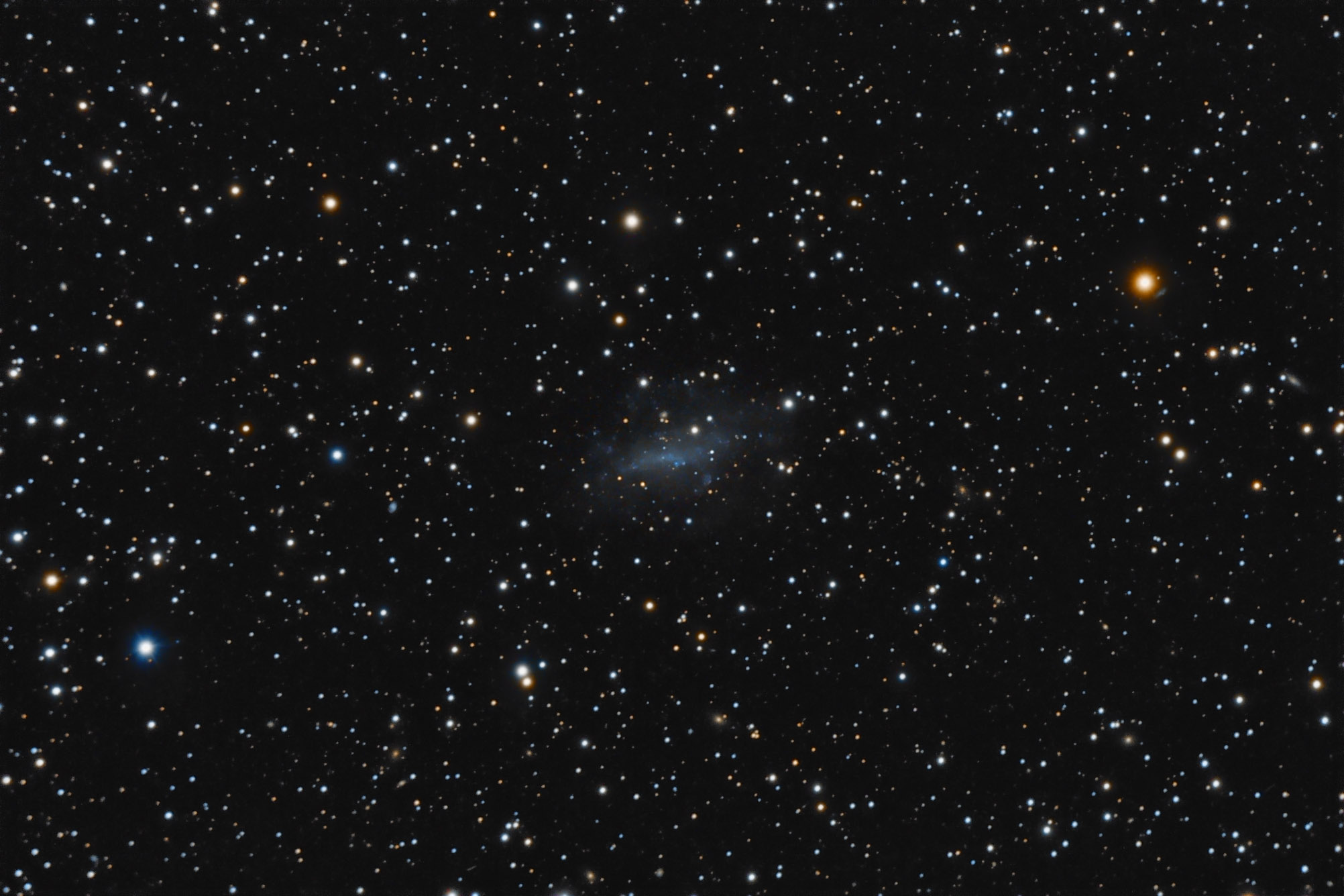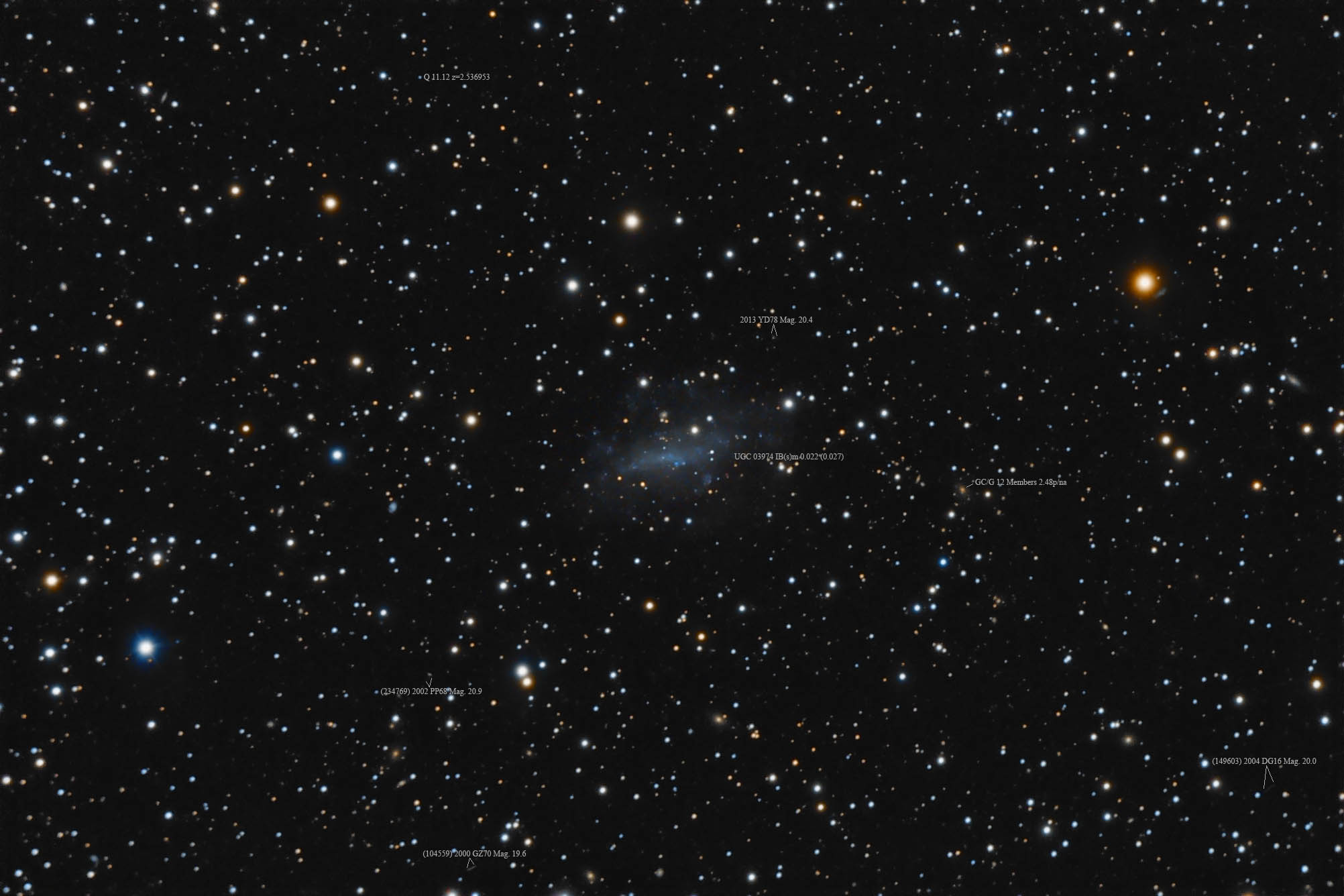| Description | Images |
Object name: UGC03974Designation(s): UGC03974, UGC 03974 is a low surface brightness dwarf galaxy in southeastern Gemini. There is much confusion over its distance. Papers seem to all disagree with each other and give reasons why the other guy's distance is likely wrong. Redshift puts it about 22 million light-years away. At such close range, redshift is often a poor distance indicator. NED sites 5 estimates using other methods that range from 6.85 to 27.4 million light-years. I'm inclined to use the more distant estimates even though the distance to M81 is much closer as the closer ones are close enough I should be resolving stars in the galaxy and I can't come close to it. Star clusters do look fuzzy indicating it isn't really distant but something over 22 million light-years seems reasonable. This galaxy has been imaged by the HST which easily resolves it into stars but does so again at a level common for a distance of about 25 to 30 million light-years from the HST images I've looked at. Papers indicate the galaxy had a starburst level of star formation but that is now over so the really hot, bright stars have died leaving only the dimmer blue stars to give it its blue color. Putting all this together I still vote for the 25 to 30 million light-year value. Assuming it is 27 million light-years distant I measure its long diameter at 316" of arc which translates to 41,000 light-years. Rather large to be considered a dwarf. Radio observations show a rather large amount of nonionized hydrogen which means it could generate a lot more stars if that gas is cool enough but that doesn't seem to be happening. Related Designation(s):11HUGS 125, CGCG 0739.0+1655, CGCG 087-030, DDO 047, MCG +03-20-010, PGC 021600, UGC 03974, UGC03974, UZC J074155.4+164809, [RC2] A0739+16, [SPB93] 088, |


